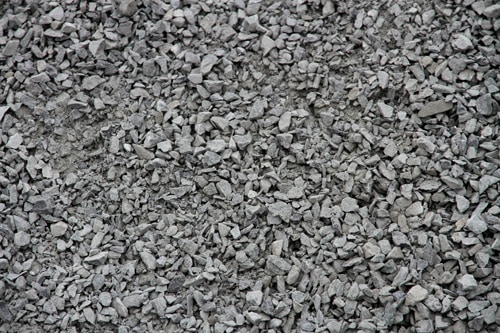Does a hot tub need to be level?
Yes, a hot tub needs to be level because resting it on voids and dips can stress the shell and cause fracturing and cracking. In addition, hot tubs can weigh as much as 8000 pounds. If this weight is not distributed well on the supporting surface, it could cause damage to the side carrying the most significant weight.
Stop wasting time and money with hot tub maintenance and confusing water chemistry! The Hot Tub Handbook and Video Course will help keep your hot tub balanced, sanitized, and crystal clear all the time.
Check out my list of high-quality hot tub products to help keep your hot tub clean and running great all year long!
If you’re looking for exact measurements, I recommend the Prexiso 2-in-1 Laser Level.
Many things could be crossing your mind right now if you’re installing a hot tub in your backyard for the first time.
The equipment comes with joy and confusion of installation because you don’t want to make a single mistake.
But the answer to your question is compelling reasons why or why not a hot tub requires level ground.
I want to look at whether leveling is part of the preparation measures you should carry out on the site where your new hot tub will sit.
Continue reading to find answers and deeper insights on positioning a hot tub.
Does A Hot Tub Need To Be Level?
Experts recommend placing a hot tub level to prolong its service life. A hot tub is designed to distribute the numerous pounds of water evenly on the surface they sit.
For this reason, you could be subjecting some parts of the hot tub to unnecessary stresses that can cause damage if you sit it on unlevel surfaces.
I have also found that failing to place a hot tub level will increase the water depth on one side of the spa.
How Do I Level The Ground For A Hot Tub?
When you have chosen the site to install your hot tub, inspect the entire area to ensure no dips and voids are on the surface. If any dips are present on the surface, you should fill them because they can stress and cause cracking on your hot tub shell.
Therefore, the question here is to fill the voids and dips on the site where you want to place your hot tub.
The first step in leveling your hot tub is to mark where you’ll lay your hot tub using paint or white chalk.
The markings are intended to show you the area where you need to prepare for placing your hot tub.
The second step is to fill the area with a layer of sand.
You should then cut a board 1 inch thick and 6 inches broad to the length sufficient to reach each end of your hot tub. Again, a miter saw will be helpful at this stage.
Slide the one-inch edge of the board from one end of the marked area as you move to the other end. The board’s edge will help move the sand over the surface to fill voids and dips present.
Finally, remove the excess sand from the marked areas after all depressions have been filled.

Stop wasting time and money with hot tub maintenance and confusing water chemistry! Get Instant access to this easy-to-use book and video course so you can spend less time cleaning and more time soaking.
Learn MoreHow To Level A Hot Tub
If you have a concrete surface that you want to level before placing your hot tub, I advise you to start by determining the slope before starting the exercise.
If the slopes are less than one inch, simple shims will suffice.
But for steeper slopes that might leave you high and dry on one end of the hot tub, you might have to take more involved solutions.
For example, your leveling exercises might require the use of gravel, sand, new concrete pads, or custom-built pads.
I want to look at how you can level a sloping concrete surface that occurred from poor construction or was provided for drainage purposes.
I have found effective methods like using plastic shims, building a raised pad, and pouring a new concrete pad.
Use Plastic Shims
Heavy-duty plastic shims will work perfectly for your concrete surface if it is out of level by an inch or less.
Plastic shims are designed to be load-bearing materials and support your hot tub from the low end of the concrete surface to make it level.
Plastic shims are highly economical when used to support your hot tub.
Before using the plastic shim, check the manufacturer’s instructions on the safe use of shims. Making mistakes with shimming the hot tub can crack it.
You might also notice that the manufacturer of the specific model you bought discourages all forms of shimming.
If you go ahead and defy these guidelines, you could be voiding the warranty terms attached to your equipment.
The main point of shimming the hot tub is to prevent damage, so be careful not to cause problems when providing a solution.
Starting with an empty tub is always advisable when laying the plastic shims because its weight is easier to deal with.
Tilt the tub from the lower end as you tap the shims to support your hot tub.
Provide plastic shims at regular intervals on the lower side for even support on your hot tub.
I recommend these Pro Project Supply Shims.
Build A Raised Pad
You might find yourself in a situation where plastic shims cannot work for your case because the surface slopes by more than an inch.
If you don’t have enough resources for a hot tub leveler or built a new concrete pad, I have researched an economical alternative you can use.
A raised pad is economical and robust enough to keep your hot tub level.
You’ll need to construct the raised pad from wood, where you shall fill gravel or sand to provide a stable surface.
Making the wood structure will require you to have basic carpentry skills.
But if the task sounds challenging, there would be no harm to pay a few bucks to a local handyman to assemble the structure for you.
He can also assist you with filling and compacting the sand or gravel after placing the wooden structure in position.
Build A Box Frame
If you choose to build a box frame, you need to prepare for the task by taking the following measurements:
- Determine the slope measurements to know how the existing concrete pad runs out of level.
- Determine the number of framing materials you’ll need. These materials include screws and 2 x 4 pressure-treated lumber.
- The volume of sand or gravel needed to fill the frame for the surface to be level.
After establishing the measurements, construct a frame box using the 2 x 4 lumber, making sure that it is approximately an inch wider than your hot tub’s base.
Rip and taper every piece of wood on the bottom to ensure the top boards are level all around when the entire box is placed on an uneven surface.
For better outcomes, observe the following tips during the exercise:
- Ensure to use pressure-treated lumber so that the new pad can withstand any moisture around the hot tub and extreme weather elements.
- Drill holes on the lowest board of the longest side to ensure that any water splashes from the hot tub or puddles after precipitation drains out through the sand or gravel.
If you’re done building your box frame, add sand or pea gravel to an inch of the top. Doing so will give you a sturdy base where you can rest your hot tub.
The alternative filler material for the box frame is cement. However, you must choose wisely. This is a permanent solution. Mix the cement into concrete properly before pouring it into the frame.
You can stain or paint your base to match the base for an appealing look.
In addition, paint can further protect your wooden material against weather elements.
Pour A New Concrete Pad
If the suggested leveling ideas do not appeal to you, you can pour concrete over an existing pad to provide extra support.
Although expensive, pouring a new concrete pad offers the best strength you could get when supporting a level hot tub.
You can consult with your local mixing plant for cost estimations, and they will help you determine the costs in your area as you prepare to adopt this option.
Can A Hot Tub Be On A Slight Slope?
Yes, you can place your hot tub on a slight slope no more significant than half an inch. A slight incline of about half an inch for every eight inches is recommended to support the hot tub drainage.
But many hot tubs are designed with their drainage mechanisms, so there would be no point in providing the hot tub on a slight slope for this reason.
The acrylic hot tubs are brittle and highly subject to fracturing if they are not put in a resting position.
Therefore, the best advice to all hot tub owners is to always check with the manufacturer’s guidelines to see placing their hot tubs on a slight slope is okay.

What Happens To A Hot Tub If The Ground Is Not Level?
When placed on the unlevelled ground, the most significant risk to your hot tub is cracking damage. Many hot tubs are made with brittle insulation materials that can crack and break when the weight of the hot tub water is not appropriately distributed on the surface.
Before you place the hot tub in a chosen location, inspect and remove any rocks and objects that could be lying on the surface.
I also advise you to fill the dips and depressions on the resting surface before placing and filling your hot tub with water to minimize the risk of breakages.
Can You Shim A Hot Tub Level?
You can shim a hot tub level if the slope is not severe. Shimming with plastic is one of the most recommended practices that save you money if you can’t do the concrete base or provide wooden pads for your hot tub.
But you should never forget to check with your manufacturers because not all hot tub models can be shimmed safely.
When the hot tub is level and tightly in position, pour water with a garden hose and make the appropriate power connections in readiness to use.
Can A Hot Tub Be Placed Directly On The Ground?
No, you cannot place your hot tub on the bare ground. When you place your hot tub on the ground directly, you increase the risk of sinking one of its sides or the entire structure, given the considerable weight it carries.
I advise you to dig out any grasses on the site and use pavers after leveling the surface. You can also pour gravel to provide firm support for your hot tub.

Does A Hot Tub Have To Sit On Concrete?
A hot tub does not have to sit on concrete, but it can. Most people prefer to sit their hot tubs on a reinforced deck, which has always worked well for them. Gravel, compacted sand, and wood frames can be used instead of concrete.
But concrete is one of the most stable options available out there. It also ensures that your hot tub is level, and you’ll never worry about the weight of water or any number of people using your spa.
But if you don’t like the concrete idea, you can consider many other great options, including the wooden deck I just mentioned. You can also go for a block paving well-compacted gravel or sand.
Does a Hot Tub Need To Be Level: Conclusion

Now you understand the importance of leveling your hot tub before you pour water and start enjoying your spa.
When you level a hot tub, you reduce the risk of fracture or breakage on its shell.
You can adopt different options to level your hot tub, including plastic shims, constructing pads, and pouring concrete.
Although shims are the cheapest and easiest option, some manufacturers discourage this method. Concrete is the best but the most expensive. However, it is not the only method available if you don’t like it.
Although some experts advise keeping your hot tub slightly unlevel for drainage purposes, check the manufacturer’s guidelines before doing so.
Most manufacturers have designed their system with a drainage mechanism that you don’t need to provide a slight slope for their equipment.
I hope you found this article on leveling a hot tub helpful.
Thanks for visiting spatoolkit.com
James Brockbank

Stop wasting time and money with hot tub maintenance and confusing water chemistry! Get Instant access to this easy-to-use book and video course so you can spend less time cleaning and more time soaking.
Learn More

